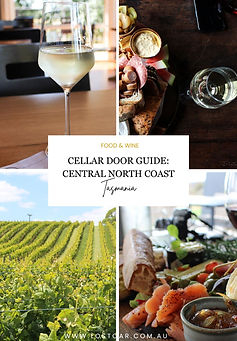TRAVEL
KANGAROO ISLAND'S
PECULIAR REMARKABLE ROCKS
Words & Photography by Kylie Bell
%20Watermarked%20(Kylie%20Bell%20Photography)-min.jpg)
Remarkable Rocks (Kangaroo Island) Photograph by Kylie Bell
Arriving at Remarkable Rocks, on the edge of Flinders Chase National Park on Kangaroo Island, after a long five-year break from what was once an annual pilgrimage, I felt like I was finally home. This collection of peculiar granite boulders, balanced atop a much larger granite slab protruding from the ocean, holds a special place in my heart. It’s a place of grounding for me—of nostalgia and inspiration. It’s also my second home, part of my identity, alongside my family; a place of anchoring.
Standing beside this geological wonder and looking out across the landscape, it was healing to take in the regrowth after the devastation that occurred just a few years earlier, when Kangaroo Island, its wildlife, and local communities endured catastrophic fires that swept over two-thirds of the island, beginning here in this very national park. The impact was extensive; lives were lost, natural habitats destroyed, and homes and livelihoods were decimated. This devastation was further compounded by the outbreak of COVID-19 shortly after, with the effects of that dual trauma still felt today within the local community. Everywhere we went since returning to Kangaroo Island, we heard the stories of islanders—their experiences, their grief, and the ongoing impacts.
_JPG.jpg)
Kylie Bell at the Remarkable Rocks (Kangaroo Island) Photograph by Kylie Bell
Fires are not new to this island. I grew up hearing stories from my parents, extended family, and generations before them—many of whom volunteered, and some who still do, with the island’s firefighting brigade. Sadly, the geography, terrain, vegetation, climate, and frequent lightning strikes create the perfect conditions for fire, especially here on the western end. Yet this time, without question, it had been the worst. It shook the community to its core.
For me, coming home and standing here at Remarkable Rocks, surveying the landscape before me, I felt awe at the power of nature. The regrowth in the years since has been incredible—nature emerging from the ashes, repainting the landscape. I recalled the photographs we had seen just the day before, showing the aftermath of the 2019 fires. In contrast, I now felt filled with a sense of rebirth and hope—yet another reason to return and, in my small way, join other travellers in supporting the local community. In doing so, visitors can experience and marvel at the raw, natural beauty of Australia’s third-largest island.
Back where I stand, I spin to take in the vast Southern Ocean, then back again to the peculiar but stunning collection of Ordovician granite boulders standing here with me, watching over the land—they’ve stood here far longer than I ever will. It’s easy to see why Remarkable Rocks remains one of our continent’s most recognisable natural icons, drawing visitors from around the globe each year. So much so, to my family’s delight a few years ago, we all bought our tickets, popcorn in hand, and piled into the movie theatre to watch the Hollywood film December Boys. The lead role was played by Daniel Radcliffe (best known for portraying Harry Potter), and it was filmed on Kangaroo Island—including Remarkable Rocks as one of the locations.
%20Watermarked%20(Kylie%20Bell%20Photography)-min.jpg)
.jpg)
Welcome to Lost Oar — a curated journal of travel, photography, and storytelling inspired by Tasmania and the world beyond. Through thoughtful editorials and vivid imagery, Lost Oar explores the intersections of nature, hiking, architecture, design, and food through evocative photography, immersive storytelling and a passion for travel.
From remote trails and geological wonders to beautifully designed spaces and local culinary gems, each story is guided by a deep curiosity and a love for unique and unforgettable experiences. Whether you're here for inspiration, practical insight, or just a moment of escape, I hope Lost Oar sparks your own sense of adventure.
Follow along @lostoar and subscribe below to keep exploring with me.
kb
Remarkable Rocks (Kangaroo Island) Photograph by Kylie Bell
Many wonder, as do I: why are these boulders here? These giant pieces of Ordovician granite, sculpted by centuries of erosion, sit poised beside the vast expanse and prevailing winds of the Southern Ocean. Or, as my imagination likes to wander, it’s as though giants once emptied their pockets here, placing these stones with care, leaving them balanced on the edge of the landscape—much like cairns (rock piles) left behind on hiking trails to mark the way for those who follow.
Beyond this point, I glance west across the bay toward Cape du Couedic Lighthouse, which has protected sailors for generations. Just below it lies Admiral’s Arch, tucked behind the sea cliffs—our next stop, where Long-nosed Fur Seals put up their flippers to bask in the sun along the rugged coastline.
Flinders Chase National Park is, as they say, Kangaroo Island’s crown jewel. On your visit, be sure to set aside a full day to explore not just the iconic Remarkable Rocks and Admiral’s Arch, but also Weirs Lookout and Cape du Couedic Lighthouse.
Kangaroo Island is home to a rich array of Australian wildlife, birdlife, aquatic mammals, and sea life. Alongside this, it offers stunning landscapes, countless empty white beaches, delicious local cuisine, and glorious South Australian weather. It’s a place that has grown and continues to evolve.
This is where my family chose to settle—first in Adelaide shortly after its founding in 1836, then on to Kangaroo Island in 1851—leaving their homelands abroad when they heard news of a planned settlement in the new colony of Australia.




.jpg)



